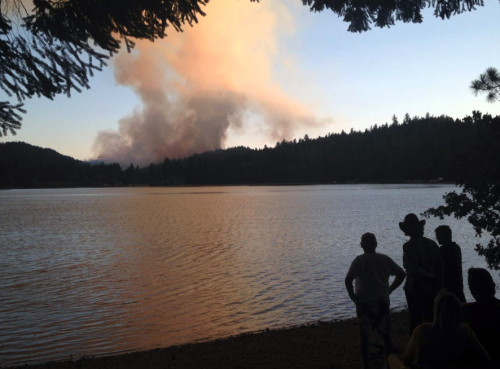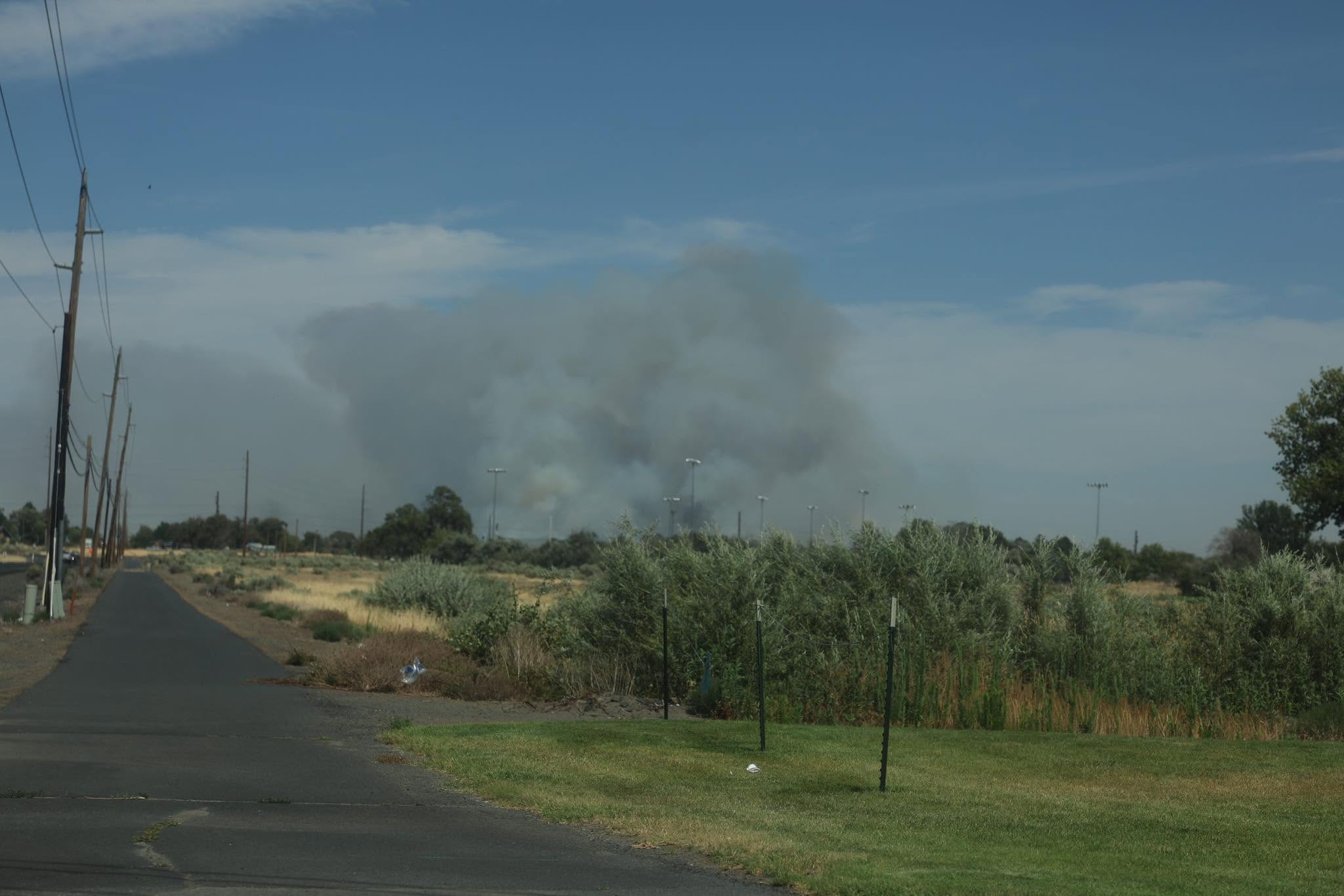Oregon owed more than $100M in firefighting costs
Published 9:22 am Tuesday, October 22, 2019

- People gather on the shores of Lake Selmac near Selma to watch the Reeves Creek Fire burn on Oregon Department of Forestry land in 2014.
SALEM — Gov. Kate Brown has appointed a financial oversight team and will hire an independent contractor to address a cash flow crisis caused by the Oregon Department of Forestry’s failure to promptly bill and collect money it is owed for wildfire costs.
The 13-member team, chaired by the governor’s chief of staff, is tasked with identifying the structural changes needed to expedite and standardize how the agency processes financial transactions related to wildfires.
It will also evaluate new ways for the agency to manage its seasonal borrowing needs.
The cash flow problems, reported in an Oct. 6 story in The Oregonian, come as the agency is facing structural financial problems in its state forest program, and a $1.4 billion breach of contract by 14 counties that begins Thursday.
The Forestry Department’s fire division is responsible for fighting fires on private and state land. It also contributes much of the resources needed to fight fires on land owned by the Bureau of Land Management and U.S. Forest Service.
The agency has more than $100 million in outstanding receivables related to wildfires as far back as 2013, most of them due from federal agencies. Of that amount, $46 million has yet to be invoiced.
Short on funds without that money, agency leaders drained internal cash reserves and left the agency scrambling to borrow more externally. In late June, agency leaders restructured a $50 million line of credit from the Oregon Treasury, narrowly avoiding default by extending the repayment period for half the loan until April. Treasury has expressed doubt about its willingness to lend to the department in the future.
In the meantime, the Department of Administrative Services has been covering the agency’s payroll — so far to the tune of $18 million. The forestry department also has tapped the financial reserves of its state and private forests programs for another $42 million.
All those monies need to be repaid, and agency leaders acknowledge the financial squeeze is hampering work in other programs. They have put a temporary freeze on all nonessential purchases to conserve cash, including spending on computer and motor pool, travel and training.
In a letter sent Friday to State Forester Peter Daugherty and forestry board Chair Tom Imeson, Brown said as a result of an agency push this summer, it had reconciled all of its bills from the 2013 and 2014 fire season.
“However,” she wrote, “it is imperative that the remaining accounting backlog be cleared expeditiously.”
The letter said an independent contractor is being hired to help address the situation, and it would be supported by additional staff from the Chief Financial Office and the Department of Administrative Services. The financial oversight team will receive regular reports from the contractor and is expected to meet for about six months.
“Time is of the essence and this team will meet regularly based on need beginning the week of October 28,” Brown wrote.
Delays in fire cost reimbursements from federal agencies have been a problem for some time. The cash flow implications were called out by state auditors in 2016. Agency leaders said the problem reached crisis proportions after back-to-back years of large fire costs piled up, and a belated realization that it simply didn’t have enough staff to deal with the problem. That work involves digging through boxes of old shift tickets and lists of equipment used on fires, reviewing them against cost-sharing agreements, auditing the results and submitting the claims.
Sen. Betsy Johnson, D-Scappoose, has expressed some concern that some of the receivables are so old that they’ll be uncollectible, as the state may no longer have the data to properly document them. The agency contends that all the bills are collectible, it’s just a question of processing them.
However, the forestry department has seen some of its fire costs disputed in the past. Under a long-standing contract, the agency protects about 2.4 million acres of land for the Bureau of Land Management. In its 2013-17 contract period, the federal bureau challenged the agency’s assessment of $4.7 million in costs that state forestry officials said had increased due to the increased length and severity of the fire season.
After mediation, BLM settled the bill for $2.5 million, just 53% of the disputed amount.
The severity of the agency’s cash flow problem caught the Board of Forestry off guard. Several members told Daugherty at a board retreat earlier this month they were alarmed because they’d been inadequately informed by agency managers, and had been caught flat-footed when the news broke.
Daugherty took full responsibility for that communications breakdown. He also wrote in an earlier email to the board that he would ensure there was clear communications between the fire protection and administrative divisions to raise the alarm about similar problems in the future.









